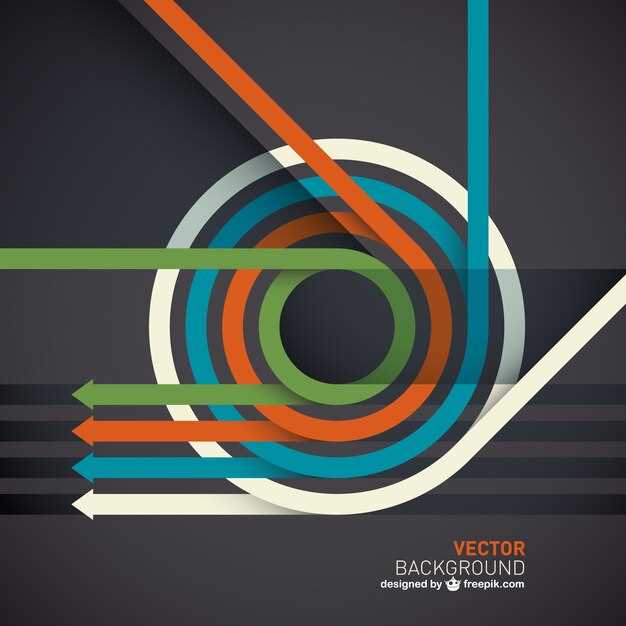Identify source of autopilot cues; replace with concrete action today. Name trigger, notice sign, swap urge with one practical step you can repeat for seven days. This minor disruption weakens grip from past habits; inner clarity follows, felt shift in control accompanies this process.
coincidence appears when you least expect; treat it as a signal to pause; when you pause, youre able to choose a constructive next move rather than returning to past acts. having a simple check-in after morning routines reduces friction; unconscious cues become visible, inner dialogue expands deeper understanding, you feel less alone facing urges.
Train attention toward longer horizons by recording one concrete goal daily; this helps align choices with family wellbeing, emotional health, personal integrity over time. When goals are written as a sentence, inner voice brings forward clearer signals; result is clarity traveling through daily life.
Over time youve wired neural pathways; you can notice truly unconscious draws from prior wiring, interrupt before hurtful actions occur to protect yourself. This ritual creates deeper awareness in moments when action seems automatic; a respectful pause reduces injuries, supports healthier family dynamics.
Clarity grows when you treat each choice as a sign to bring longer-term goals to life; when you act with intention, you align with outcomes that respect inner self, nourish family; residual hurt decreases.
Be Aware Of Your Past
Identify earliest sources shaping present reactions; bring awareness to cues that spark familiar responses when stress arises; share findings with a trusted friend for accountability.
Keep a concise diary documenting event, reaction, result; label cues as from parent messages; look for distorted thinking; connect them to what happened because recognition reduces automaticity; recognizing similarity helps longer progress.
Practice a reframing sentence when distress arises: this cue is a signal, not a verdict. Looking with understanding, one becomes able to choose new responses rather than slipping toward familiar habits; distortion fades because you could see what comes next, truly worth trying before impulse takes over.
Set micro-steps: breathe four counts, pause, choose a constructive response; schedule a daily check-in with a friend; note signals from wired stress responses; longer pauses yield wiser reactions.
Bring humility to each check-in; well practice builds resilience over time. Ever note small gains; expect more calm, saying less, while listening more. When triggers arise, look for signals; longer pause yields meaningful change. Becoming steadier, this process wired through daily life; looking with understanding, similar distortions appear entirely different as you learn. Because reaction starts small, youre invited to never abandon effort; that awareness links back to parental messages, creating worthy traction before breaking reactive habits; truly possible, could become a new normal.
Track Recurring Habits with a Daily Journal
Begin a 5-minute daily journal to identify triggers; log behavior; track outcome. This practice helps replace automatic responses with deliberate steps; emotionally aware, you begin real change.
- Identifying recurring triggers in daily routine.
- Log behavior following triggers; note feelings, fear; room for improvement.
- Choose a replacement action that aligns with goals; replace impulsive move with a calm pause.
- Record outcome after applying replacement; note mistakes, lessons learned, worth of small wins for boss.
- Reflect on past behavior in room or place where behavior repeats; plan a walk or simple routine change to end cycle.
- Set a simple weekly review: identify progress, adjust plan, keep moving toward better room habit.
After weeks, their feelings shift; you feel emotionally lighter, more in control. People notice real progress; boss acknowledges gains. You leave past habits behind, walk toward a new place; room for growth expands. Replace fear with action, begin again; light returns, change becomes real.
Identify Triggers: People, Places, and Emotions
Start with a daily log to map triggers: write who, where, mood; note conditions surrounding each sign.
Identify People who trigger you: partners, colleagues, friends; observe emotionally how interaction shifts both behavioral responses.
Note Places that pull back: home, office, gym, routes; each location carries signs from past experiences.
When emotions rise, cognitive processing shifts; heightened emotion narrows deep perceptions, tilting reality toward fear or craving, as experienced by others.
Clarity becomes a cognitive matter; you can choose them, leave negative conditions entirely, pursue a deeper path.
Pause; label; act: observe signs; select a healthier response that aligns with reality, gaining clarity.
Discuss triggers with partners; set boundaries; share plan for change.
Daily practice includes brief reflection; journaling; quick cognitive reframing.
Every moment offers a chance to adjust perceptions; reality shifts.
Conditions incredibly helpful; recognizing them before actions helped clarify choice.
Question Narratives Driving Your Actions
Start by identifying a press you apply daily: a single question interrupting autopilot. That prompt moves actions from reflex toward place of meaning.
Which move could shift deep feelings away from distorted responses toward a healthier pattern? Ask this before every risky choice to keep focus on progress rather than habit.
Identify beliefs driving extreme actions; such beliefs originate in early family or boss dynamics that shaped self-perception.
Use talk prompts with a trusted listener, including boss-like coaching or inner critic: What facts support this belief, what evidence contradicts, what would shift decisions if tested slowly?
Feelings gauge: press toward deep emotion without judgment; note distortions such as catastrophizing, personalization, binary thinking.
Move from autopilot to tiny experiments; leave a safe zone after identifying a pattern.
Track responses over a two week period; press data points; measure changes in self-esteem.
Deep review cements gains; recognizing which narratives still press actions toward healthier moves; cultivate love for yourself.
Create Boundaries to Pause Automatic Reactions
Pause 60 seconds when signs of heightened emotion appear. Press a calm breath; observe body cues; recognize cognitive load. This opening creates space where you decide response; avoiding transferring impulse to action. dont let repetition drive hurtful behavioral patterns; begin to heal by aligning actions with yourself.
Boundaries create space during down moments; this pause reduces automatic cognitive load; shifts from hurtful source cues; healing proceeds. Social, family dynamics present triggers; recognize these as repetition in wired scripts. This moment aligns actions with core values.
Unconscious drivers reveal themselves slowly; recognize self scripts wired from family, social contexts. Times of stress become openings for real change; taking small steps accelerates progress; this process isnt instant, yet progress rises.
| Phase | Aktion | Nutzen |
|---|---|---|
| Phase 1 | Pause 60 seconds on signs; press breath; observe body cues; recognize cognitive load | Lower arousal; higher self recognition; choice appears |
| Phase 2 | Set boundaries about social contact; exit tense scene; dont escalate emotions; prevent transferring emotion | Prevents hurtful transferring; preserves energy; maintain alignment |
| Phase 3 | Unbewusste Skripte aus dem familiären kulturellen Kontext aufspüren; Trigger benennen; Erkenntnisse dokumentieren | Selbstkontrolle erhöhen; Wiederholungen reduzieren; echte Verhaltensänderung beginnen |
Design-Ersatzroutinen für kleine, positive Entscheidungen
Beginnen Sie einen 60-Sekunden-Austausch, sobald ein Auslöser auftaucht: Ersetzen Sie eine verletzende Reaktion durch eine einfache, positive Handlung.
Optionen: Wasser trinken; aufstehen, dehnen; 3 Atemzüge nehmen; sich dem natürlichen Licht zuwenden; eine Wahrheit über Bedürfnisse notieren; einem vertrauten Verbündeten eine SMS schreiben. Bewahren Sie dieses Cue-Sheet in einem Raum auf, der im Moment des Drangs erreichbar ist.
Protokollieren Sie die Ergebnisse, um das Bewusstsein zu schärfen. Beobachten Sie, wie sich das Selbstbild in Richtung echtem Wert verschiebt; das Gefühl, wertvoll zu sein, wächst. Die Liebe wächst mit jeder kleinen Handlung. Erhöhte Motivation folgt auf konsequente Reaktionen. Verfestigte Reaktionen lockern sich, wenn sich neue Handlungen bilden. Die Kraft wächst mit stetiger Übung. Die Überzeugungen verschieben sich in Richtung Resilienz.
Das Öffnen der Wahrheit offenbart die Realität der Bedürfnisse, nicht der Fehler. Dieses Bewusstsein dient als Zeichen; richte den Blick auf Antworten, die mit dem Wert übereinstimmen.
Therapie unterstützt tiefere Arbeit: Erforschung von Auslösern, Umstrukturierung von Reaktionen, Aufbau gesünderer Verhaltensweisen. Wenn Sie Schwierigkeiten hatten, wiederholen Sie den Zyklus, um das Selbstvertrauen wiederzugewinnen.
Es geht nicht um Perfektion; es geht einfach um kleine, zuverlässige Schritte. Selbst wenn die Stimmung schlecht ist, heben fokussierte Handlungen sie an.
Beobachten Sie erneut die Ergebnisse und passen Sie die Optionen an.
Dieser Ansatz half vielen, ein Gefühl der Kontrolle zu bekommen, das einst schwer fassbar schien.

 Durchbrich die Schleife – Wie du aufhörst, alte Muster zu wiederholen und in deine Zukunft eintrittst">
Durchbrich die Schleife – Wie du aufhörst, alte Muster zu wiederholen und in deine Zukunft eintrittst">


 4 großartige Möglichkeiten, Ihr Ego loszuwerden und Glück zu finden">
4 großartige Möglichkeiten, Ihr Ego loszuwerden und Glück zu finden">
 Die Kraft der Selbstliebe bei der Manifestation deiner Träume">
Die Kraft der Selbstliebe bei der Manifestation deiner Träume">
 Warum es Ihnen an Selbstvertrauen in Ihre intuitive Intelligenz mangelt und wie Sie sie entwickeln können">
Warum es Ihnen an Selbstvertrauen in Ihre intuitive Intelligenz mangelt und wie Sie sie entwickeln können">